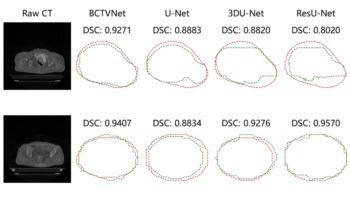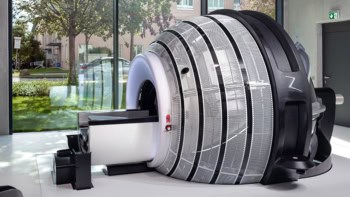
Almost half of all cancer patients receive radiation therapy to curb the growth of malignant cells. But while the effects of ionizing radiation on cell death are well established, little is known about how radiation affects the extracellular matrix (ECM) residing within and surrounding tumours.
Researchers from Vanderbilt University and Cornell University have now demonstrated that ionizing radiation can reduce the stiffness of both the ECM of an extracted tumour and an isolated matrix of collagen fibres. Their results suggest that radiation therapy might have effects beyond disrupting cellular DNA (APL Bioengineering 2 031901).
“We wanted to know how radiation affects the tissues surrounding cells, particularly how this changes the stiffness of the matrix,” explained Cynthia Reinhart-King. “The change in tissue stiffness during tumour growth can be palpable. Stiffness, for example, is what you would look for in breast self-exams.”
During tumour progression, increased ECM deposition and cross-linking occur, leading to a thicker, stiffer matrix. This stiffer ECM is vital for cancer cells to migrate throughout the body, signal to one another and form tumours. The development of therapeutics to inhibit or reverse ECM stiffening has become a promising tool in attacking cancer cells.
To investigate the impact of ECM irradiation on tumour cells, the researchers seeded non-irradiated cancer cells on irradiated and non-irradiated collagen matrices. Using infrared spectroscopy and confocal imaging to analyse the chemical and architectural changes, respectively, they found that tumour cells were less likely to spread when seeded on ECMs softened by irradiation.
Cells suspended in a stiff matrix were more likely to migrate through the matrix to the other side of a serum gradient, analogous to how metastasizing cancer cells break free from their tumours. Softened matrices were more likely to hold cells in place. The researchers also determined that the radiation does not break down individual collagen fibres, the long, thin structural proteins that act as the matrix’s scaffolding. Instead, it softens the matrix by cutting the bonds between these fibres, relaxing the matrix and reducing its stiffness.
The authors note that their results have ramifications for both in vitro and in vivo systems. In vitro, the data suggest that irradiation could be used to create matrices with tailored mechanical properties. In vivo, the findings imply that therapeutic doses of radiation may alter tissue mechanics directly.
Reinhart-King notes that these findings might enable future fractionated radiation – longer term bouts of therapy using a lower radiation intensity. One particular area of interest is determining whether softening can reduce nearby blood vessel leaking and improve drug delivery. “Since there are risks associated with radiation, we’re interested in investigating how fractionated the dose should be,” she explained. “The key will be to find the right balance.”



